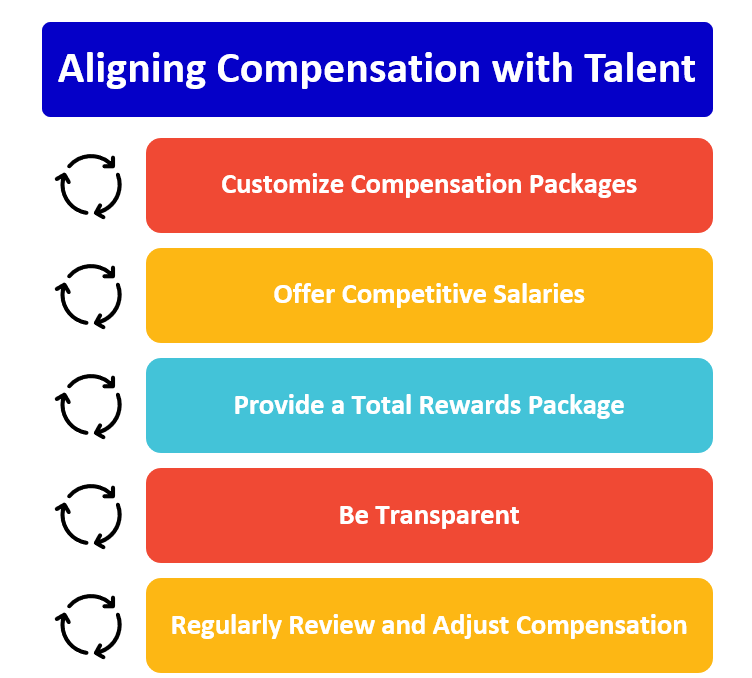With the rapid pace at which the modern workforce is evolving, companies need to revamp compensation strategies to ensure alignment with the changing talent needs.
The traditional ‘one size fits all’ approach to compensation and benefits is no longer effective, as employees’ expectations have transformed exponentially over the years.
To ensure alignment of compensation with talent, businesses need to customize their remuneration and benefits framework according to the needs of individuals at distinct stages of the employee life cycle. This customization requires focusing on pivotal areas like transparency and flexibility of the total package.
Unsurprisingly, millennial employees are 22x more likely to work at a company with a known reputation for being transparent and high trust.
By following this approach of catering to employees across the employee lifecycle, leaders can create effective compensation strategies that cater to the unique needs of their employees. This strategy is crucial for success in attracting and retaining top talent in ultra-competitive job markets.
So, let us explore how companies can revamp their compensation strategies to ensure alignment with the changing talent landscape of the modern workforce.
“The median number of years that wage and salary workers continue with their employers is 4.1 years. The figure is 6.8 years for public sector employees.”
The Critical Role of Compensation in Attracting and Retaining Top Talent
In the new world of work, aligning compensation with talent is more important than ever. HR leaders realize that compensation is crucial in retaining high potential employees, even more so than work flexibility. Compensation is the baseline expectation for employees, but it is the additional benefits that differentiate businesses and helps retain top talent.
Wealth creation is also a significant reason employees stay with an enterprise. A flexible compensation structure allows organizations to tailor their compensation strategy to align with individual employee requirements at different career stages.
For instance, younger employees may prioritize cash compensation, while older employees may value health benefits more.
By aligning compensation with talent, companies can attract and retain high-potential employees, foster a culture of engagement and commitment, and drive overall business success in most competitive markets globally.
Unsurprisingly, over 47% of professionals rate salary and associated rewards as crucial part of employee retention.
Understanding the Relation of Compensation with Attracting and Retaining Top Talent
- Aligning compensation with talent is crucial for retaining high-potential employees in the new world of work.
- Flexible compensation structures allow companies to tailor their compensation strategy to meet the individual needs of employees at different career stages.
- By aligning compensation with talent, businesses can attract and retain top talent, foster a culture of engagement and commitment, and drive overall business success in competitive global markets.
|
Practical Steps to Align Compensation with Talent
Here are some practical steps that can help companies with aligning compensation with talent in the new world of work:
- Customize Compensation Packages: To attract and retain top talent, it is vital to tailor compensation packages to the needs of individual employees. A flexible compensation structure allows companies to offer customized benefits and perquisites to meet employees’ specific needs at different career stages.
- Offer Competitive Salaries: Compensation is the basic requirement for employees, and it is crucial to offer salaries that align with industry standards. Enterprises that do not offer competitive salaries risk losing top talent to competitors offering better compensation. In fact, the cost of replacing an employee can go up to 1.5x to 2x the annual salary.
- Provide a Total Rewards Package: A total rewards package includes compensation, benefits, and perquisites beyond the salary’s cash component. Therefore, it is crucial to communicate the total rewards package to employees and highlight the unique aspects that set the company apart from competitors.
- Be Transparent: Transparency is critical when it comes to compensation. Employees need to understand how their compensation is determined and the components of their total compensation package. In addition, companies must communicate their compensation philosophy clearly to employees and be transparent about how it aligns with their business objectives.
- Regularly Review and Adjust Compensation: Workplaces are continually evolving, and so should compensation strategies. Regularly reviewing and adjusting compensation packages ensures that they remain competitive and align with the changing needs of employees. Regular performance reviews and salary adjustments based on merit can also help retain top talent and foster a culture of engagement and commitment.

Moving Beyond Monetary Benefits: The Key to Optimizing Compensation for Companies
The way ahead for companies to optimize compensation is to shift their focus from solely monetary benefits to a more comprehensive approach that considers employees’ overall well-being and development. In fact, a study pointed out that 22% of employees leave their positions due to lack of growth and development opportunities.
Enterprises must recognize that compensation is not just about salary or bonuses. It is a broader concept that includes non-monetary benefits such as learning opportunities, work-life balance, and positive work culture.
Companies can attract and retain high-potential talent by prioritizing employee development and creating an environment that promotes work-life balance. It is crucial to move away from the traditional one-size-fits-all approach to compensation and tailor it to meet the needs of individual employees.
By doing so, businesses can create a unique total rewards package that sets them apart from competitors and appeals to employees seeking comprehensive benefits. In addition, optimising compensation requires companies to focus on their employees’ overall well-being and development, which can contribute to a positive work culture, higher productivity, and increased retention rates.
“According to CNBC, 94% of employees would continue working if their current employer showcased a commitment to helping them learn.”
Revamping Reward Strategies for Future Workforce Retention
Aligning compensation with talent in the new world of work is crucial to attracting and retaining high-potential employees. While compensation plays a vital role in talent acquisition, over-investing in it often yields diminishing returns.
To optimize compensation, it is essential to focus on hyper-personalization of all decisions related to compensation and benefits, moving away from the traditional one-size-fits-all approach.
Transparency and communication in the remuneration framework are also crucial as they help employees understand the structure of the compensation plan and how the performance reward system works.
Businesses need to prioritize their employees’ overall well-being and development, creating a positive work culture that fosters a work-life balance and provides learning opportunities. By doing so, leaders can create unique total rewards packages that set them apart from competitors and appeals to high-potential employees.
To learn more about the views of prominent business leaders on the need for alignment of compensation with talent, check out this eBook on Managing Talent and Compensation in the New Age.

